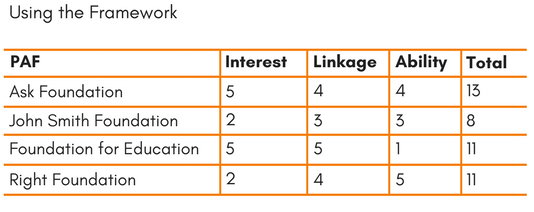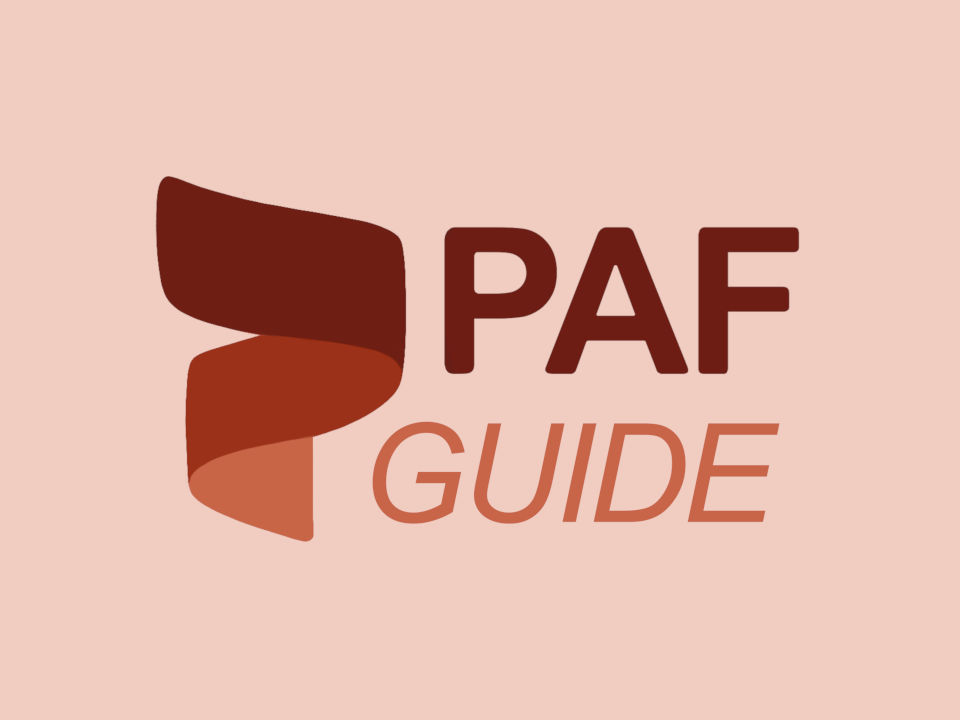Private Ancillary Funds are fast becoming one of the major giving vehicles within Australia, with $800 million in giving predicted for 2018 according to JBWere’s Shamal Dass. For a Non-Profit DGR 1 organisation, PAFs are a giving mechanism that simply cannot be ignored.
One of the major frustrations for non-profit organisations looking to engage with PAFs is taking that first step to identify a prospective PAF, and shortly afterwards finding out about the individuals who make decisions about how and to whom funds from the PAF are transferred. Prospect research — or, even better, having access to our PafGUIDE® — can help you with identifying PAFs. But what information do you need to consider before approaching a PAF?
We suggest a simple framework to kick the process off after identifying a handful of PAFs. This involves looking at Interest, Linkage, and Ability of the PAF and ranking them on a 5-point scale.
INTEREST
Interest is the attention and alignment the PAF has to your cause. It represents past giving history, which can include giving to your organisation, or other charities with a similar mission.
PAFs often state who they seek to benefit on registration, so it’s important to understand these interests in order to approach PAFs who are invested in the kind of work your organisation does, while avoiding those that are established to assist other causes.
The easiest PAFs to pursue are those who have given to your organisation in the past. This is the same for PAFs where the directors have a history of personally giving to your organisation. A PAF director scan against your existing database can reveal if any past donors are current board members.
So, after looking at the past giving of the PAF and its directors, ask yourself: on a scale of 1 to 5, how interested would this PAF be in my cause?
LINKAGE
Linkage represents the strength of the link between the directors of the PAF and your organisation. Discovering whether a PAF director has volunteered or given to your charity is a good first point of linkage, also demonstrating a degree of interest. Another point of linkage to investigate is the personal degrees of connection: this can involve how well connected you, your board, staff, or other major donors are to the PAF director.
Simply getting a list of director names and passing them to the board may assist with this linkage, as non-profit board members are typically well connected. They may know the directors personally or know somebody who can provide the right introduction.
Sometimes your board might not know who in their network owns a PAF and may need some assistance on directing their own efforts. A way to do this is connecting with your board, staff, leadership team, and any appropriate major donors on LinkedIn. Then look up the names of the prospective PAF directors. If they are a 2nd degree connection of your contacts, you have the potential of an introduction and therefore linkage to the PAF, varying in strength depending on the relationship of your point of linkage and the PAF director.
Now by looking at whether your board, staff, colleagues, or past donors know PAF directors, ask yourself: on a scale of 1 to 5 what is the linkage of my organisation to this PAF?
ABILITY
Ability is determined through looking at the overall capacity of the PAF to give to your cause. This reflects the ability of the PAF to give to your organisation’s cause. As is self-evident, large PAFs have more giving capacity than smaller ones. Ability can also be determined by the value of past identified giving. Some PAFs may spread their giving across several organisations; others may make one larger donation to a single cause. Some may also be limited in where they are mandated to be able to give, for example they may only be capable of giving to select causes or within specific regions.
Higher valued PAFs should have a higher ranking, but not all PAFs with a large asset base will necessarily have the ability to give to your cause. Understanding this will impact how you position your case for support and the size of the gift you ask for.
With your goals and cause in mind, as well as the size and past giving history of the PAF, think about: on a scale of 1 to 5 what is the ability of the PAF to give to my organisation?

Once you’ve prospected a list of PAFs and tallied the results, you can begin prioritising getting the right introductions or positioning the correct messages to the PAFs. Those who are higher should be approached first while those lower can have individual tactics applied to increase their interest, linkage or ability to your organisation. For example, invite a director from the Right Foundation to an event to increase interest in your cause or, if for example you are an arts organisation, develop a program and case for support around education to better align with how the Foundation for Education gives.
When dealing with PAFs, prioritising who and how to target prospects can be difficult. By deconstructing and ranking the funds using Interest, Linkage, and Ability, the process can be streamlined. This leaves the fundraiser with more time to work on the things that are important: developing the relationship and making the ask.

